Approaching analysis of VOCs in water samples
Discover the latest technologies and methods to advance your volatile organic compounds (VOCs) analysis in water samples
15 Mar 2024
VOCs are often associated with air pollution, however they can also contaminate water through direct discharges or atmospheric deposition, posing potential risks to human health and the environment. In a series of application notes, insights into various approaches for VOC analysis in drinking water as well as ground and wastewater samples, aiming to ensure water safety and regulatory compliance, are provided.
1. Analysis of VOCs in drinking water according to U.S. EPA Method 524.4
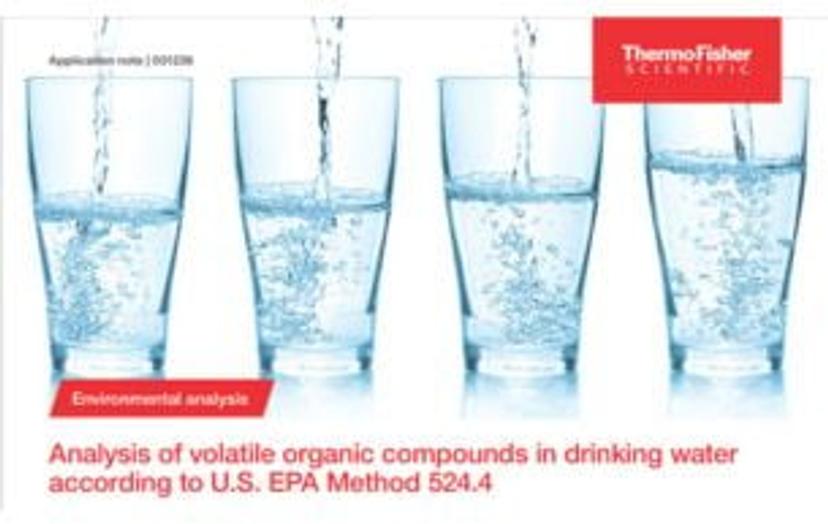
Explore an analytical method that meets the requirements outlined in US EPA Method 524.4 for the quantitation of volatile organic compounds (VOCs) in drinking water, using the Teledyne Tekmar Atomx XYZ purge and trap (P&T) system along with a Thermo Scientific™ ISQ™ 7610 Single Quadrupole MS system coupled with a Thermo Scientific™ TRACE™ 1610 Gas Chromatograph (GC) and Thermo Scientific™ Chromeleon™ Chromatography Data System (CDS).
2. Analysis of VOCs in drinking water with the ISQ 7610 GC-MS using HeSaver-H2Safer technology
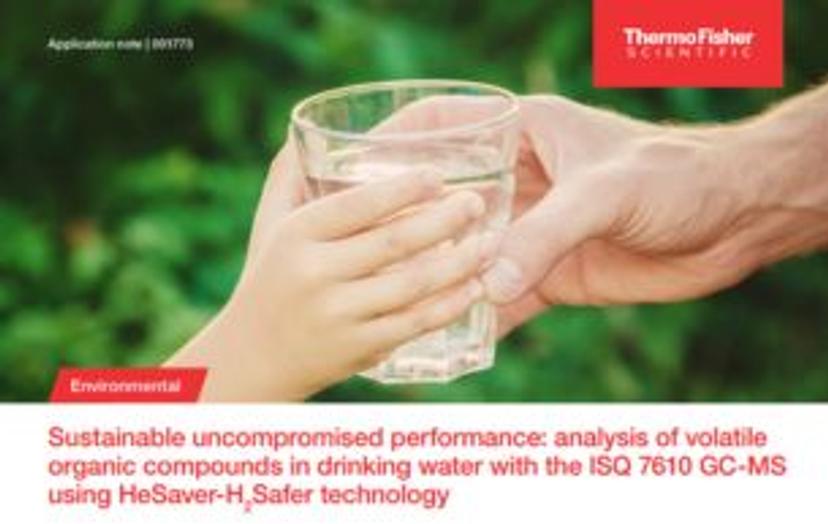
Consider a routine analytical method that meets the requirements outlined in US EPA Method 524.4 for the quantitation of VOCs in drinking water, using the Teledyne Tekmar Atomx XYZ Purge and Trap (P&T) system along with a Thermo Scientific™ ISQ™ 7610 MS system coupled with a Thermo Scientific™ TRACE™ 1610 gas chromatograph (GC), equipped with the Thermo Scientific™ HeSaver-H2Safer™ technology for split/splitless (SSL) injector, and Thermo Scientific™ Chromeleon™ Chromatography Data System (CDS) software.
3. Determination of BTEX and VOCs in drinking water by GC-MS/MS coupled to static headspace and solid-phase microextraction sampling
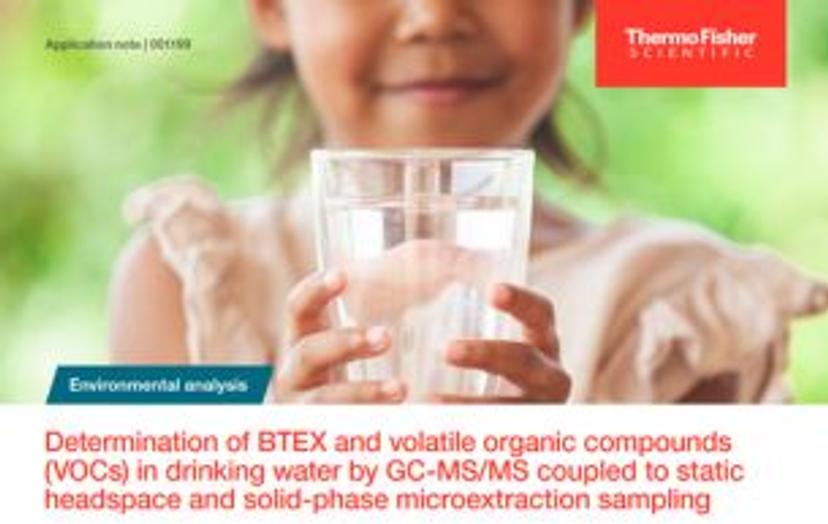
Learn about the analytical performance of static headspace (SHS) and solid-phase microextraction using Arrow technology (SPME Arrow) for the determination of benzene, toluene, ethylbenzene, and xylenes (BTEX) and chlorinated and brominated VOCs in drinking water using a Thermo Scientific™ TSQ™ 9000 triple quadrupole GC-MS/MS system.
4. Reducing the helium consumption for analysis of VOCs in accordance with EPA Method 8260D without compromising performance using HeSaver-H2Safer technology
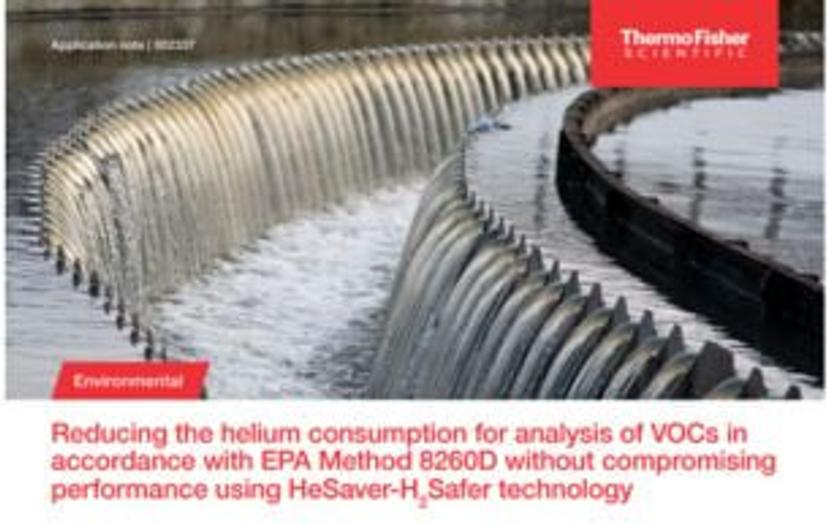
Understand the significance of VOCs. The method of choice for analyzing VOCs involves gas chromatography coupled with single quadrupole mass spectrometry using Purge and Trap (P&T) sampling. The HeSaver-H2Safer™ technology offers a solution by significantly reducing helium consumption without compromising performance. The application of this technology in conjunction with gas chromatography and mass spectrometry for the analysis of water and soil samples according to EPA Method 8260D is detailed.
5. In-Tube Extraction Dynamic Headspace (ITEX-DHS) sampling technique coupled to GC-MS for sensitive determination of odorants in water
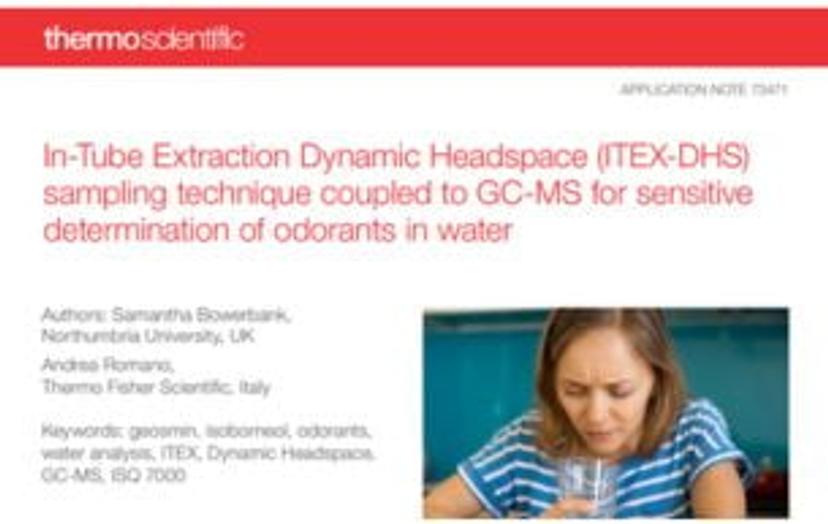
Explore a study that aims to demonstrate the applicability of the In-Tube Extraction Dynamic Headspace (ITEX-DHS) technique coupled to gas chromatography-mass spectrometry (GC-MS) for the determination of trace-level odorants in water. Through dynamic headspace enrichment achieved by means of the ITEX technique, the target analytes isoborneol (IB), 2-methyl-isoborneol (2-MIB), 2,4,6-trichloroanisole (2,4,6-TCA), and geosmin were extracted and pre-concentrated to reach sub-ppt level limits of detection (LOD).
